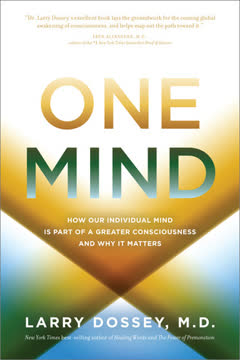Key Takeaways
1. The One Mind: A Collective, Nonlocal Consciousness
Mind is by its very nature a singulare tantum. I should say: the overall number of minds is just one.
A shared domain. Evidence suggests a collective, unitary domain of intelligence, the One Mind, of which all individual minds are a part. This isn't a subdivision like the unconscious, but an overarching dimension where minds meet. It's a potential path out of global division and destruction.
Beyond separation. The core argument for the One Mind is the nonlocality of consciousness. Individual minds aren't confined to brains or bodies (space) or the present moment (time). This means the perceived separateness of minds is an illusion; they are fundamentally linked.
Ancient and modern. This concept is ancient, found in spiritual traditions like Vedanta ("thou art that") and esoteric Christianity ("The kingdom of God is within you"). It's also affirmed by modern thinkers and scientists, including Nobel physicists like Erwin Schrödinger and David Bohm, who saw evidence for a unified consciousness.
2. Selfless Acts Hint at Our Underlying Unity
Universal compassion is the only guarantee of morality.
Defying biology. Acts of selfless rescue, like Wesley Autrey jumping onto subway tracks to save a stranger, defy evolutionary biology's focus on genetic survival. Such actions suggest a deeper motivation beyond self-preservation or reciprocal altruism.
Oneness in action. Philosopher Arthur Schopenhauer believed self-sacrifice occurs because the rescuer realizes their oneness with the person in need. At the decisive moment, the sense of separation dissolves, and the danger to the other becomes the danger to oneself.
Beyond culture/species. This spontaneous compassion seems to transcend cultural lines and even species boundaries, sparking a response based on a common identity. It's an experience of the One Mind binding us all, making actions like saving a stranger feel simply "right."
3. The Brain May Be a Receiver, Not a Producer of Mind
The brain does not generate thought ... any more than the wire generates electric current.
Challenging assumptions. The dominant scientific view is that the brain produces consciousness. However, this is an unproven assumption. Damage to the brain affects mental function, but this doesn't prove production; a damaged TV affects the picture but doesn't produce it.
Transmission theory. An alternative, ancient view is that the brain acts as a receiver or transmitter for consciousness, which exists outside the brain. The brain limits and filters a wider, universal consciousness, allowing only what's needed for biological survival.
Evidence from anomalies. Phenomena like normal mentation in individuals with severe hydrocephalus (John Lorber's work) or the difficulty localizing memory in the brain (Karl Lashley's work) challenge the idea that an intact brain is strictly necessary for consciousness or memory storage.
4. Near-Death Experiences Suggest Consciousness Survives Death
My experience showed me very clearly... that incredibly powerful consciousness far beyond what I'm trapped in here in the earthly realm begins to emerge as you get rid of the filtering mechanism of the brain.
Beyond the body. Near-death experiences (NDEs), reported by millions, often involve consciousness operating outside the physical body, encountering light, deceased loved ones, and experiencing profound peace and unity. These occur even when brain activity is severely compromised or absent.
Not just dying brains. NDE-like experiences also occur in healthy individuals, during meditation, prayer, or spontaneously. Shared-death experiences, where multiple healthy individuals witness the same phenomena around a dying person, further challenge the "dying brain" explanation.
Immortality implied. The consistent features of NDEs across cultures and conditions, particularly the sense of timelessness and unity, strongly suggest that consciousness is not extinguished at death but is part of a larger, potentially eternal, domain – the One Mind.
5. Memories and Traits May Carry Across Lifetimes (Reincarnation)
While this may seem to be an astounding statement—that memories, emotions, and physical injuries can carry over from one life to the next—the evidence, I think, leads us to that conclusion.
Children's accounts. Psychiatrist Ian Stevenson meticulously documented thousands of cases of young children who reported detailed, verifiable memories of past lives. These accounts often included specific names, places, events, and even modes of death.
Physical correlations. Strikingly, many children in these cases exhibited birthmarks or birth defects that corresponded precisely to wounds or injuries sustained by the deceased person they claimed to have been in the previous life.
Beyond genetics. While genetics explains some birth defects, a large percentage remain unexplained. Reincarnation, as a "third factor," offers a potential explanation for why specific defects or traits appear in one child and not another, and why they take a particular form.
6. Animals and Humans Share a Nonlocal Connection
I think that there may well be a flow of pattern or instruction which crosses species lines and allows even radically different organisms to borrow each other’s ideas....
Beyond the senses. Evidence suggests a nonlocal bond between humans and animals, operating across space and time. Cases include lost pets returning home over vast, unfamiliar distances and animals seeming to know when their owners are returning or in danger.
Shared awareness. Rupert Sheldrake's research on dogs knowing when owners are coming home, even with varied routines, points to a connection beyond sensory cues. Interspecies rescues, like dolphins saving humans or horses saving farmers, suggest compassionate behavior transcends species.
Ancient wisdom. Premodern cultures often took mind-to-mind communication with animals and other humans for granted, seeing it as a natural part of existence. This suggests a sensitivity to a shared consciousness that modern society has largely lost.
7. Savants Access Knowledge Beyond Normal Means
The issue with these savants is that in most cases, so far as can be observed, the savant has not acquired, could not have acquired, and is quite incapable of acquiring, the information that he so liberally dispenses.
Unlearned knowledge. Savants, often with developmental disabilities, possess astonishing abilities and knowledge in specific areas (math, music, memory) that they could not have acquired through normal learning or experience.
Beyond genes and brain. Attempts to explain savant abilities solely through genetics ("factory installed" software) or brain function fall short, as they don't account for the origin of the specific, often contemporary, information savants possess.
Tapping the source. Savant abilities suggest access to a vast, organized domain of information or intelligence beyond the individual mind – the One Mind or "cosmic soup." Their cognitive limitations might paradoxically help by reducing the brain's filtering of this information.
8. Twins Exhibit Striking, Unexplained Similarities
maybe their souls are identical too.
Identical lives. Studies of identical twins reared apart reveal uncanny similarities in personality, behavior, preferences, and even life events (names of spouses, jobs, habits) that cannot be fully explained by genetics or environment alone.
Beyond nature/nurture. While twin studies are often framed as "nature vs. nurture," the striking correlations in separated twins suggest a third factor at play. Some twins raised apart are even more alike than those raised together, perhaps due to less pressure to differentiate.
Nonlocal connection. The shared thoughts, feelings, and correlated life events in twins, particularly identical ones, point to a nonlocal connection between their minds. They may be unconsciously participating in a shared consciousness, the One Mind, that influences their individual lives.
9. Distant Physical/Emotional Links (Telesomatic Events) Occur
empathic resonance... links individuals across space and time.
Shared sensations. Telesomatic events involve individuals experiencing similar physical sensations or changes at a distance, without sensory contact. Examples include feeling a blow when a loved one is injured or experiencing pain when a distant relative is in distress.
Emotional bonds matter. These events occur most frequently between people who are emotionally close (spouses, parents/children, twins), suggesting that love, empathy, or compassion facilitates this distant connection.
Survival value. Some telesomatic events have life-or-death significance, acting as an early warning system. This suggests that the ability for minds to link nonlocally has survival value and may be an inherent human capacity.
10. Remote Viewing Demonstrates Nonlocal Perception
our awareness is nonlocal, our consciousness is limitless, psi is real, and its accuracy and reliability are independent of distance and time.
Accessing distant information. Remote viewing is the ability to acquire information about a hidden or distant target without physical perception. Decades of research, including classified government programs, have demonstrated this capacity.
Distance and time irrelevant. Experiments show that the accuracy of remote viewing is not diminished by distance or time, and it cannot be blocked by physical barriers. This strongly supports the idea that consciousness is nonlocal.
Practical applications. Remote viewing has been used successfully to locate lost objects, describe secret facilities, and even predict future events, suggesting access to a universal information field – the One Mind.
11. Dreams Offer Pathways to Universal Information
Let us learn to dream, gentlemen, and then we may perhaps find the truth.
Beyond the self. Dreams suspend the sense of individual self and spatial/temporal limitations, making them a natural doorway to the One Mind. Information and creative insights often emerge during dream states.
Scientific breakthroughs. Numerous scientific and medical discoveries, such as the sewing machine needle design, the periodic table, and the structure of benzene, were directly inspired by dreams.
Shared dream space. Collective or mutual dreams, where multiple individuals report similar dream content, and shared dreams, where people dream of interacting in a common space, suggest that dreaming minds can connect and share information nonlocally.
12. Love is a Key to Experiencing Oneness
Hate is not the opposite of love, the opposite of love is individuality.
Transcending separation. Love, empathy, and compassion are gateways to the One Mind because they help overcome the sense of isolation and individuality. This is supported by research showing that emotional closeness enhances nonlocal connections.
Combating loneliness. In an increasingly connected yet lonely world, the One Mind offers a potential solution by providing a sense of fundamental belonging and harmonious relationship with a universal force, not dependent on physical proximity or technology.
A universal spectrum. Love may be a fundamental force in the universe, expressed in varying degrees from the nonlocal correlations of subatomic particles to the profound unity experienced in the One Mind. It is a core aspect of our interconnected reality.
Last updated:
FAQ
What is One Mind: How Our Individual Mind Is Part of a Greater Consciousness and Why It Matters by Larry Dossey about?
- Central Concept: The book explores the idea that individual minds are not isolated but are part of a greater, collective consciousness called the One Mind.
- Nonlocal Consciousness: Dossey argues that consciousness transcends the brain and body, connecting all beings across space and time.
- Integration of Science and Spirituality: The book bridges scientific research and spiritual traditions to propose a unified understanding of mind and consciousness.
- Practical Implications: Dossey suggests that recognizing our interconnectedness is vital for healing, compassion, and addressing global crises.
Why should I read One Mind by Larry Dossey?
- Challenging Materialism: The book questions the materialistic view that consciousness is confined to the brain, offering a broader perspective.
- Evidence-Based Exploration: Dossey presents scientific studies, case reports, and personal stories that support the existence of a collective consciousness.
- Bridging Worlds: It merges rigorous science with ancient spiritual wisdom, appealing to readers interested in both domains.
- Urgency and Hope: Dossey argues that embracing the One Mind is essential for overcoming division, selfishness, and environmental threats.
What are the key takeaways from One Mind by Larry Dossey?
- Interconnected Minds: All individual minds are linked within a nonlocal, timeless consciousness.
- Scientific Support: Phenomena like telepathy, near-death experiences, and twin studies provide evidence for the One Mind.
- Healing and Compassion: Recognizing our unity can foster empathy, healing, and ethical responsibility.
- Balance of Unity and Individuality: The One Mind allows for both collective connection and personal uniqueness.
How does Larry Dossey define the “One Mind” and consciousness in One Mind?
- Broad, Inclusive Definition: Dossey uses “mind” and “consciousness” in a wide sense, acknowledging the complexity and ambiguity of these terms.
- Consciousness as Fundamental: He draws on philosophical traditions to describe consciousness as the source of awareness, not a byproduct of the brain.
- Nonlocal and Eternal: The One Mind is nonlocal, omnipresent, and eternal, connecting all sentient beings beyond physical boundaries.
- Limits of Language: Dossey notes that language is inadequate to fully capture consciousness, emphasizing the importance of direct experience.
What scientific evidence does Larry Dossey present in One Mind to support nonlocal consciousness?
- Remote Viewing and Telepathy: Experiments show individuals can access information or communicate across distances without sensory input.
- Twin and Telesomatic Studies: Identical twins and emotionally close individuals often share sensations or experiences despite being apart, defying conventional explanations.
- Brain Activity Correlations: EEG and fMRI studies reveal synchronized brain activity between distant individuals during intentional focus or healing.
- Quantum and Holographic Models: Dossey references quantum entanglement and holographic theories as frameworks for understanding interconnected consciousness.
How do twin studies and telesomatic events illustrate the One Mind in One Mind by Larry Dossey?
- Uncanny Similarities: Identical twins reared apart often display remarkable behavioral and physiological similarities, suggesting a nonlocal connection.
- Telesomatic Phenomena: Twins and close individuals sometimes experience simultaneous physical sensations or emotional states, even when separated by great distances.
- Empathic Resonance: Emotional closeness enhances these connections, supporting the idea of shared consciousness.
- Beyond Genetics: These phenomena challenge explanations based solely on genetics or environment, pointing to the One Mind.
What role do near-death experiences (NDEs) and past-life memories play in One Mind by Larry Dossey?
- Evidence for Survival: NDEs provide compelling accounts of consciousness existing independently of the brain, supporting the One Mind’s eternal nature.
- Common NDE Features: Experiences of unity, light, omniscience, and unconditional love during NDEs suggest immersion in the One Mind.
- Past-Life Research: Studies of children’s memories and physical marks corresponding to previous lives indicate continuity of consciousness.
- Interactional Dualism: Dossey supports the idea that mind and body are distinct but interacting, with consciousness surviving death.
How does One Mind by Larry Dossey explain animal-human and cross-species connections?
- Remarkable Animal Stories: Cases like Bobbie the Collie’s long journey home and dolphins rescuing humans illustrate cross-species links.
- Collective Animal Behavior: Coordinated movements in herds, flocks, and schools suggest a form of group intelligence or morphic fields.
- Nonlocal Mind in Animals: Dossey argues that animals, like humans, participate in the One Mind, enabling extraordinary connections.
- Implications for Compassion: Recognizing these links can foster greater empathy and ethical treatment of animals.
What is the relationship between healing and the One Mind in One Mind by Larry Dossey?
- Nonlocal Healing: Healing can occur through distant intentionality, where compassionate thoughts or energy affect recipients without physical contact.
- Scientific Evidence: Studies show measurable brain responses in recipients during distant healing efforts, supporting nonlocal mind-to-mind interactions.
- Transformative Experiences: Individuals who access the One Mind often develop healing abilities, sometimes after NDEs or deep meditation.
- Integration of Science and Spirituality: Dossey advocates for combining scientific and spiritual approaches to healing, emphasizing empathy and love.
What is the “dark side” of the One Mind according to Larry Dossey in One Mind?
- Negative Shared Experiences: The One Mind can transmit malevolent thoughts and emotions, leading to harm or distress.
- Destructive Group Phenomena: Groupthink and mass delusions, such as those seen in totalitarian movements, illustrate the dangers of pathological coherence.
- Balance Needed: Dossey stresses the importance of balancing unity with individuality to prevent destructive outcomes.
- Ethical Responsibility: Recognizing the dark side encourages responsible and compassionate engagement with the One Mind.
How does Larry Dossey in One Mind address the self, individuality, and creativity within a collective consciousness?
- Self as Illusion: Dossey aligns with views that the self is a construct, and true awareness transcends individual identity.
- Creativity from the One Mind: Creative insights and breakthroughs often arise from accessing the “cosmic soup” or universal field of information.
- Intuition Over Logic: Many creative geniuses rely on intuition and unconscious processes, supporting the idea of nonlocal, holistic awareness.
- Balance of Unity and Uniqueness: The One Mind allows for both collective connection and the preservation of individual uniqueness.
What methods or pathways does Larry Dossey suggest for accessing the One Mind in One Mind?
- Dreams as Doorways: Dreams can suspend ordinary boundaries, allowing access to the One Mind and inspiring creative or scientific breakthroughs.
- Altered States and Practices: Meditation, reverie, and automatic writing can bypass the brain’s filters, increasing access to collective consciousness.
- Love and Emotional Connection: Emotional closeness and love enhance the permeability of boundaries between minds.
- Openness and Letting Go: Dossey emphasizes the importance of respectful openness and letting go of control to access the One Mind.
Review Summary
One Mind receives mostly positive reviews, with readers praising its exploration of collective consciousness and spiritual experiences. Many find it thought-provoking and well-researched, appreciating the scientific evidence presented. Some critics argue the book relies too heavily on anecdotes and makes unsupported logical leaps. Readers value the book's discussion of phenomena like telepathy, near-death experiences, and psychic abilities. While some find it repetitive or lacking in practical applications, others describe it as enlightening and comforting, offering a new perspective on human interconnectedness.
Similar Books
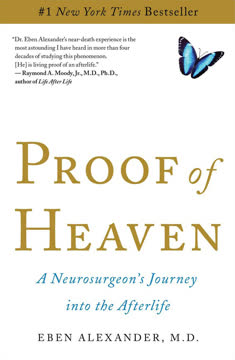
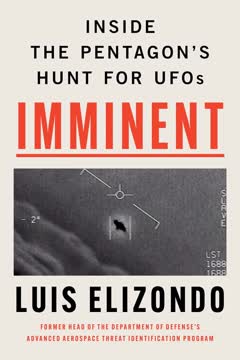
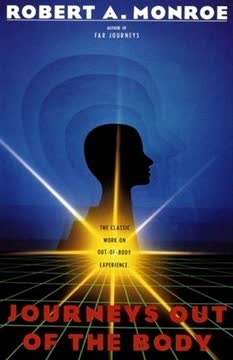
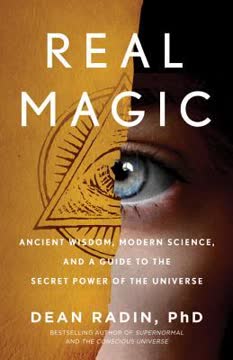
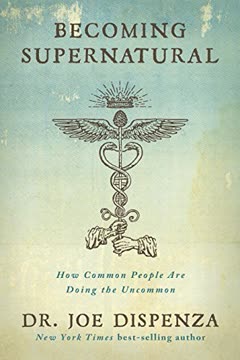
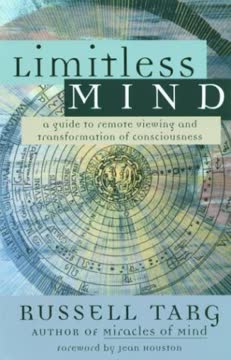

Download PDF
Download EPUB
.epub digital book format is ideal for reading ebooks on phones, tablets, and e-readers.
